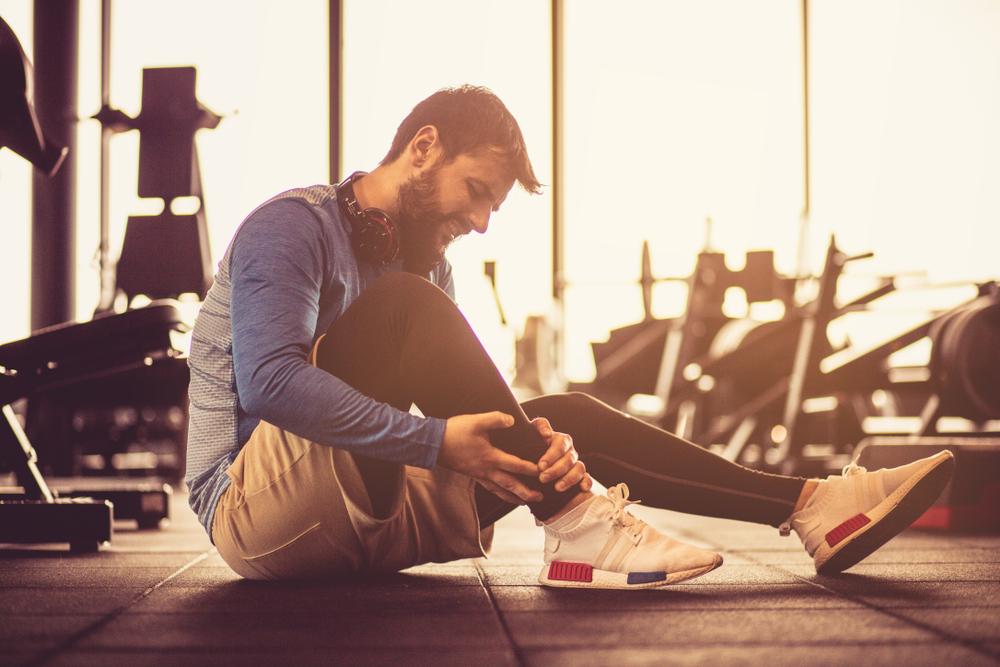Your knee is a widely dynamic joint involved in walking, running, lifting and almost every other movement your body makes. You have probably heard that the knee is full of many different ligaments, bones and muscles. Today, we're looking at knee ligaments, what are they and how can you keep them safe from injury.
What are knee ligaments?
Alongside all the muscles and bones, you have four main ligaments responsible for moving each knee in different directions, keeping you stable and on the move.
Ligaments are bundles of connective tissue bands that co-ordinate movement in joints, and in your knee, the four ligaments are:
- ACL (Anterior Cruciate Ligament): This keeps the knee from rotating and keeps the lower leg bones in place. Find out how Bauerfeind helped Roosters NRL players recover from ACL injuries.
- PCL (Posterior Cruciate Ligament): This prevents the lower leg bones from shifting apart with each movement.
- MCL (Medial Cruciate Ligament): This keeps the thigh bone from moving inwards.
- LCL (Lateral Cruciate Ligament): This keeps the thigh bone from moving outwards.
All these ligaments work together to stabilise and move the knee. And if any of the ligaments are injured, it can stop your knee from moving safely.
There are a wide range of injuries that affect the ligaments, some much more common than others. Here are a few tips on how to protect and support your ligaments, both in and out of injury.

Pictured above: Victor Radley and Sam Verills (Roosters NRL) being fitted with Bauerfeind SecuTec Genu knee braces, after both players suffered ACL ruptures.
Exercise and stretching for knee ligament injuries
Strengthening the muscles surrounding the ligaments in your knee is one of the best ways to protect them and reduce the risk of injury. The best exercises are ones which target the quads, hamstrings and glutes.
Try exercises such as squats, chair dips, wall-sits and step-ups, to support and strengthen knee ligaments.
Making sure you stretch and warm down after exercise and sports will also help to minimise the risk of injury as it gradually eases the muscles back to rest.
If you're starting to exercise again after injury, you might be interested in this: How Long Should I Wait to Run After a Torn ACL.
How a knee brace can help with ligament injuries
While strengthening is a great way to protect the ligaments, if you’ve already had a knee ligament injury, or you enjoy highly physical activities or contact sports (such as trail running, rugby etc), then it is recommended that you wear a knee brace or knee support. Either for injury prevention or to protect a recovering injury.
As the ligaments are responsible for controlling rotation, twisting and sideways bending of the knee, a semi rigid or rigid brace that stabilises the joint and prevents these movements, will assist when recovering from a previous injury. Try the GenuTrain S Hinged Brace or the SecuTec Genu.
For those who are looking for injury prevention, wearing a mild brace or compression sleeve with a gel insert will keep the muscles active and stable during heavier movements. This type of brace will support the ligaments while under strain. Try the GenuTrain.
Preventing knee ligament damage
Your general lifestyle, work practices and health conditions can all affect the ligaments in your knees. If any of the following apply to you then it is recommended that you focus on building up leg strength to protect your ligaments as well as wearing a support or brace during physical activity:
- Working at a desk all day.
- Suffer from arthritis or meniscus problems.
- Have played rugby or contact sports for at least 3 years.
- Are often hiking, skiing or on rocky ground.
Your ligaments are some of the most important parts of your knee, and taking care of them will keep your knees in good shape for the years to come.
Do you have private health? Most private health extras will cover Bauerfeind Products, check to see if yours is included. Bauerfeind Private Health Insurance Inquiry.

Bauerfeind products are developed at our innovation and manufacturing facility in Zeulenroda, Germany. Based on years of scientific research, our award-winning braces and support garments are highly recommended by medical professionals and athletes worldwide.
For assistance selecting the right product for your needs, book a video consultation with a Bauerfeind expert: Book Video Call, or call us on 1300 668 466
















